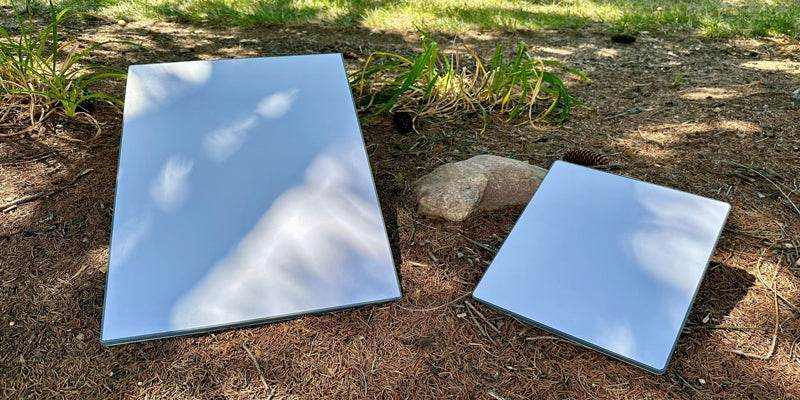
Starlink Mini vs Standard
Share
The Mini dish is Starlink’s latest innovation. Like the name implies, it’s a much smaller version of the Standard dish. The small form factor makes it ideal for travel and camping. It’s about the size of a laptop and weighs just a few pounds. The Starlink Mini is less than half the size and weight of the Standard.
一、Key Features Difference
Size:
- Standard dish measures 23.4 inches by 15.07 inches by 1.5 inches.
- The Mini dish is 11.75 inches by 10.2 inches by 1.45 inches.
Weight:
- Standard weighs over 6.5 pounds with the kickstand.
- The Mini is 2.56 pounds.
Snow Melting:
- The standard can melt 1.5 inches of snow per hour.
- The Mini can melt 1.0 inches of snow per hour.
Waterproof Rating:
- They are identical, rated IP67.
- But the standard's separate router must be placed indoors (it is only rated IP56).
Security:
- The both models are WPA2
Router Technology:
- Standard has a separate, standalone router supporting Wi-Fi 6 and 802.11 a/b/g/n/ac/ax Wi-Fi technology.
- Mini has an integrated, internal route supporting Wi-Fi 5 and 802.11a/b/g/n/ac Wi-Fi technology.
Router Coverage:
- Standard is rated to cover 3,200 square feet and supports 235 connected devices.
- The Mini is rated to cover 1,200 square feet and handle 128 connected devices.
Third-party Router Support:
- Both models can be connected to a third-party router for better router performance.
Ethernet Ports:
- Standard has 2
- Mini has 1
Speeds:
- For comparison, one test at an identical location at an identical time in identical coverage,
- the standard achieved 400 Mbps download speed while the mini achieved 150 Mbps. Upload speeds will be a fraction of that. Other users report lower speeds for each, but there are few identical site/time tests.
Idle Power Consumption:
- Standard consumes 20 watts
- Mini consumes 15 watts.
In-Use Power Consumption:
- Standard consumes 75-100 watts
- Mini consumes 20-40 watts.
- Results will vary depending upon environment, features activated, etc.
Power Supply:
- Standard receives power over a Power Over Ethernet (POE) cable, the same one used for Ethernet/data (so one cable runs to it). It uses AC power brick (100V or 240V, drawing up to 2.5 Amps) or DC-DC power supply (12V to 48V with 30 Amp input), sending 56V 3.75 Amps to the dish and router.
- The mini accepts an input of 12 V DC to 48 V DC. This can come from the AC power brick (100V or 240V) which sends 20V 2A to the dish, a USB-C cable mini-accessory with a USB PD 20V 5A (100 Watt) power supply, or the car adapter which simply sends 12 V DC or 24 V DC from a battery supply. With the mini, there will always be a power cable of some type, and there does not need to be an Ethernet cable because the router is built into the dish itself.
Portability:
- Mini has many options for easy portability (backpacks, small cases, etc.).
- Standard can be placed out on a stand, relocated, and placed inside a van/RV to easily pack it away - it is more designed for permanent placement or reasonably simple relocation rather than being "carried around by a person" portable.
二、Starlink Standard Setup Guide

三、Starlink Mini Setup Guide

